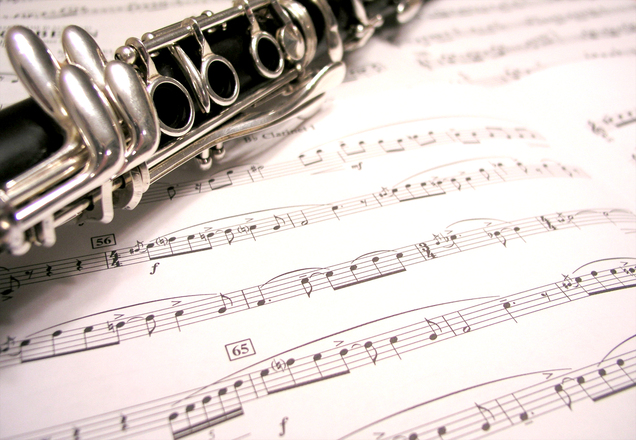Musical instruments then and now - The evolution of musical instruments

Music is the heartbeat of human culture, transcending time and language. It has always been a fundamental aspect of human expression, and this expression has been channeled through a myriad of musical instruments throughout history. From the primitive beginnings of percussion instruments to the technologically advanced synthesizers of today, the evolution of musical instruments is a captivating journey that showcases the ingenuity of human creativity and the ever-changing nature of music itself.
The Primitive Origins
Ancient Rhythms and Sounds
The roots of musical instruments can be traced back to the dawn of human civilization. Our ancestors, devoid of the complex instruments we know today, found creative ways to produce sound. Early humans would have realized that they could create rhythm by clapping their hands, slapping their thighs, or striking objects against one another. These rudimentary forms of percussion instruments laid the foundation for the development of more sophisticated instruments.
Wind and String Beginnings
As human societies advanced, so did the complexity of musical instruments. Wind and string instruments emerged as early innovations. The first flutes, crafted from bird bones and later from materials like wood and bamboo, were born. Strings were plucked and stretched across various objects, giving rise to the earliest string instruments. These instruments were not only used for entertainment but also had a significant role in rituals and ceremonies.
Ancient Civilizations: The Cradle of Musical Innovation
Mesopotamia and the Lyre
In ancient Mesopotamia, the lyre took center stage. This stringed instrument had a distinct sound and shape, resembling a small harp. Musicians plucked its strings, producing melodies that resonated through ancient city-states. The lyre's evolution paved the way for the development of the harp, an instrument still cherished in contemporary classical music.
Egyptian Legacy: Harps and Flutes
In the land of the pharaohs, music was deeply intertwined with spirituality. Harps, lyres, and flutes featured prominently in religious ceremonies. The hauntingly beautiful sounds of the Egyptian harp and the soothing melodies of the flute played a role in both life and death rituals.
The Classical Era: Precision and Elegance
The Classical Era (1750-1820) marked a pivotal moment in the evolution of musical instruments. This period, known for its precision and elegance, saw the emergence of instruments that have become icons in the world of classical music.
The Grandeur of the Piano
The piano, a marvel of engineering and artistry, took center stage during the Classical Era. It was a significant departure from earlier keyboard instruments, offering greater dynamics and tonal possibilities. Composers like Mozart and Beethoven composed masterpieces specifically for the piano, showcasing its versatility and expressive range.
Strings, Bowed and Plucked
The violin family, comprising the violin, viola, cello, and double bass, saw significant refinements during this era. Stradivarius and Guarneri, legendary luthiers of the time, crafted instruments that are still revered for their exceptional craftsmanship and tonal qualities. These string instruments became the backbone of classical orchestras.
The 20th Century: A Sonic Revolution
The 20th century brought a sonic revolution to the world of music. Advancements in technology led to the creation of new musical instruments and altered the way music was composed and performed.
Electrifying the Guitar
One of the most significant innovations of the 20th century was the electric guitar. This instrument revolutionized popular music, giving birth to genres like rock 'n' roll. Musicians such as Jimi Hendrix and Eric Clapton pushed the boundaries of guitar playing, using distortion and feedback effects to create iconic sounds that continue to influence generations of guitarists.
Synthesizers: Shaping the Soundscape
Electronic keyboards and synthesizers emerged as game-changers. These instruments allowed musicians to create entirely new sounds by manipulating electronic waveforms. From the analog synthesizers of the 1960s to the digital synthesizers of today, these instruments played a pivotal role in the development of electronic and pop music.
Digital Revolution in Music Production
With the advent of computers, music production underwent a digital transformation. Digital Audio Workstations (DAWs) enabled musicians and producers to compose, record, and edit music entirely in the digital realm. This technological shift democratized music production, allowing artists to create professional-quality recordings from the comfort of their homes.
The Present and Future of Musical Instruments
As we step into the 21st century, the world of musical instruments continues to evolve. Traditional instruments coexist with cutting-edge technology, opening up exciting possibilities for musicians and enthusiasts alike.
Virtual Instruments and MIDI
Musical Instrument Digital Interface (MIDI) technology enables electronic instruments to communicate with computers and other devices. Musicians can now use virtual instruments and software synthesizers to create an endless array of sounds. This technology has greatly expanded the creative possibilities for composers and producers.
Customization Through 3D Printing
Advancements in 3D printing have made it possible to manufacture customized musical instruments. Musicians can design and create instruments tailored to their unique preferences and playing styles. This innovation is particularly beneficial for experimental musicians seeking unconventional sounds.
Sustainability and Ethical Instrument Making
As environmental awareness grows, there is a greater emphasis on sustainability in instrument manufacturing. Luthiers (instrument makers) are exploring eco-friendly materials and practices to reduce the environmental impact of instrument production. Additionally, efforts are being made to address the ethical sourcing of materials, particularly in the case of rare woods.
Fusion and Cross-Cultural Instruments
Musical genres are continually evolving, and instruments are adapting accordingly. Fusion genres like world music and jazz fusion have led to the creation of hybrid instruments that blend elements from different cultures. These instruments enable musicians to explore diverse musical traditions and push the boundaries of creativity.
Conclusion: A Harmonious Continuation
The journey of musical instruments from their primitive origins to their current state of technological sophistication is a testament to human ingenuity and creativity. Whether it's the timeless elegance of a classical violin concerto or the futuristic sounds of an electronic synthesizer, musical instruments continue to shape the way we experience and appreciate music. As technology continues to advance, the musical landscape will undoubtedly evolve further, opening new avenues for musical expression and exploration. In this ever-changing world of music, one thing remains constant: the universal language that transcends time and culture—music itself.
 ofme.net
ofme.net






